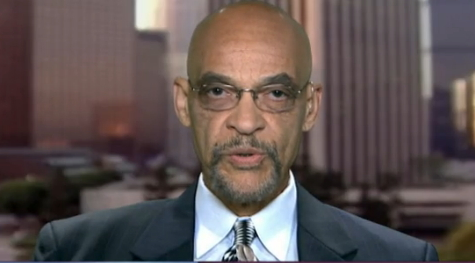Earl Ofari Hutchinson
There are two deeply troubling warning signs in the trial of former Minneapolis cop, Derek Chauvin in the slaying of George Floyd. The first came when a Black student at Duke University found Floyd’s toxicology report slipped on a Black History Month bulletin board at the University on March 20.
There was nothing about Chauvin on the board; his long record of misconduct complaints against him, or his firing. Just bad stuff about Floyd. It was ugly, but not as ugly as the USA/Ipsos poll on the eve of the start of the Chauvin trial. It found a stunning reversal of how much of the public, but in reality many whites, viewed Chauvin’s actions and Black Lives Matter. In a word, not very favorable for BLM, and very favorable for Chauvin. Or as one poll respondent put it, “It was a case of a cop doing his job.” Now absolutely nothing had changed in the circumstances of Floyd’s slaying in the months that passed. Yet so many people changed their minds about Chauvin and Floyd. It was a near textbook example of the victim now almost having to prove that he was a victim to legions of disbelievers. Now, George Floyd, not Derek Chauvin, was on trial.
How did that happen? Or better maybe I should say, should we really be surprised at the seemingly stunning reversal? Floyd had a prison record, and a toxicology report did find there were drugs in his system. Defense attorneys Chauvin’s defense attorneys made no secret that they would hang much of their defense of Chauvin on this. They’d argue; that the nine plus minutes of his knee on Floyd’s neck didn’t kill him, but the drugs did. Any other time this ludicrous defense would be laughed out of court. However, this is not any other time. It’s a white cop and in much of the public’s mind an African American male with a criminal record.
The subtle assault on Floyd has two aims. One is to deconstruct him as supposedly not the innocent victim much of the press has depicted him as. The even more devious and insidious aim is if not to exonerate Chauvin for the murder, at least present a comforting rationale for why he did what he did to Floyd. If enough doubt can be sown in and outside the courtroom about the circumstance of Floyd’s slaying, then maybe Chauvin’s actions weren’t as disgusting as the video made it seem.
The trashing of Floyd as a criminal with some culpability in his death is slanderous and silly stuff. The pantheon of stereotypes and negative typecasting it’s anchored in is not. It’s the shortest of short steps to think that if an innocent, such as Floyd, can be depicted as a caricature of the terrifying image that much of the public still harbors about young and not so young Black males, then that image seems real, even more terrifying, and the consequences are just as deadly.
For a time, the hope was that former President Obama’s election had buried once and for all negative racial typecasting and the perennial threat racial stereotypes posed to the safety and well-being of Black males. It did no such thing. Immediately after Obama’s election teams of researchers from several major universities found that many of the old stereotypes about poverty and crime and blacks remained just as frozen in time. The study found that much of the public still perceived those most likely to commit crimes are poor, jobless and Black. The study did more than affirm that race and poverty and crime were firmly rammed together in the public mind. It also showed that once the stereotype is planted, it’s virtually impossible to root out. That’s hardly new either.
Penn State University researchers conducted two landmark studies in 2003 and 2008 on the tie between crime and public perceptions of who is most likely to commit crime. The study found that many whites are likely to associate pictures of Blacks with violent crime. This was no surprise given the relentless media depictions of young Blacks as dysfunctional, dope peddling, gang bangers and drive by shooters. The Penn State study found that even when Blacks didn’t commit a specific crime; whites still misidentified the perpetrator as an African American. The recent poll on Chauvin and race shows little has changed.
The bulging numbers of Blacks in America’s jails and prisons seem to reinforce the wrong-headed perception that crime and violence in America invariably comes with a Black male face such as Floyd’s. It doesn’t much matter how prominent, wealthy, or celebrated the Black is. The overkill frenzy feeding on the criminal or borderline criminal antics of a litany of black NFL and NBA stars, that run afoul of the law or are poorly behaved, and of course, everyone’s favorite stomping boy, the rappers and hip hop artists, further implant the negative image of Black males, like Floyd.
Duke University officials quickly removed the damaging report on Floyd from the bulletin board, and said they’d investigate. OK? Then what? The damage was done. The poll on attitudes on race and the Chauvin trial, found that the majority of Blacks condemned Chauvin’s actions. OK, but that’s to be expected. Neither changes the fact that given the power of racial stereotyping, for many, George Floyd, not Derek Chauvin is on trial.
Earl Ofari Hutchinson is an author and political analyst. He is the author of the forthcoming What’s Right and Wrong with the Electoral College (Amazon Kindle)
He is the host of the weekly Hutchinson Report on KPFK 90.7 FM Los Angeles and the Pacifica Network. His weekly political commentaries can be found at thehutchinsonreport.net

